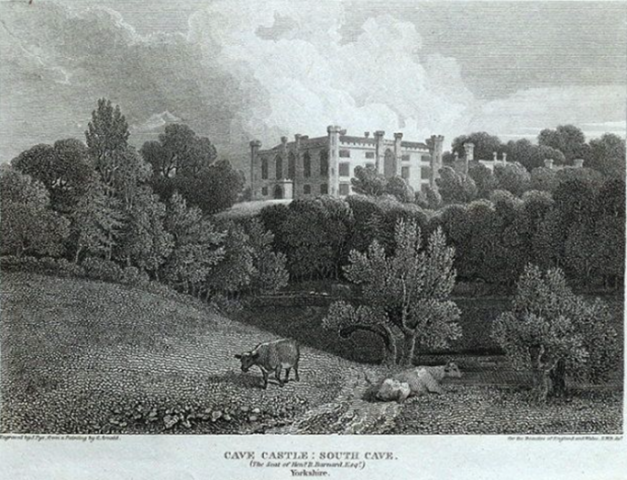Winters in Georgian East Yorkshire
The Revd Nicholas Nichols, rector of Patrington, recorded in the parish register, as follows, what has been considered the most severe winter of the 18th century.
‘On Friday, December 28th, 1739, a violent storm blew from the east, which lasted for more than two days. At the same time began a very hard frost, and on Tuesday January the first, following, fell a great quantity of snow, which continued upon the ground at Patrington till Sunday, the tenth of February following. Then a thaw began, and continued till the Monday night following, at which time the frost returned as severe as ever, and with frequent snow, lasted till February 20th. A fair called Frost Fair was kept, and booths built on the Thames at London. The spring following was very hard, cold, and dry. The wind blew almost perpetually from the north, north-east, and north-west. Little or no rain fell for a considerable time, so that the pastures were almost bare, the wells dry, and the winter corn very short. On the 21st day of April 1740 … a very deep snow fell at Patrington with a north wind which quite covered the ground… A hard frost and snow that lay several days [from] October 24th 1740.’
The severe winter was nationwide. On 31st December 1739 Dr Huxham of Plymouth noted that it was ‘the coldest day in the memory of man’. Post boys riding on horseback were said to have been found dead from the cold and watermen in London reported passengers dying while being ferried across the Thames before it froze. A work entitled The Contentment of God recorded, possibly with some exaggeration, that ‘Men felt so oppressed that days passed by unheeded. One would and could hardly speak; one sat and thought yet could not think; if anyone spoke a word it was with a hard set face. Many hens and ducks, even the cattle in the stalls, died of the cold; the trees split asunder. Not only beer but wine in cellars froze. Deeply sunken wells were covered with impenetrable ice. Crows and other birds fell to the ground frozen in their flight. No bread was eatable, for it was as cold and hard as stone’.
Less dramatically John Dickinson, the Quaker estate steward at Warter reported to his employer, Sir John Pennington, on 6 January 1740: ‘We have exceeding sharp frosty weather, and a pretty deal of snow, which makes it very cold travelling’. Five days later he noted that the cold continued and that the price of coal at York had soared from 14 to 32 shillings a chalder and on 29 January he commented that the sharp weather ‘makes peoples winter fodder spend fast, and their work go on very slow’. The frost was still continuing at Warter on the 15th of February.
As with the winters of 1947 and 1963, that many of our members will remember, it was the length of time that the intense cold and snow lasted that made the winter of 1740 so remarkable. Another severe winter occurred in 1795 which was recorded in the meteorological journal kept by Henry Boldero Barnard, squire of South Cave. A few extracts:
Wednesday, 21 January 1795: “The snow very deep it has almost snowed continually since Thursday night last. A robin Red Breast took refuge in the Breakfast room where we sit and stays very contentedly fed with bread crumbs and meat.” Wednesday 4 February: “A great deal of snow this morning. The snow very thick, and the weather more severe than was ever remembered. Corn as high as seven shillings a bushell.”
Sunday 15 February. ‘Accounts of great floods and many bridges broken down from the thaw and dissolution of the great quantity of snow that has been on the ground. All the Mail Coaches stopped.”
Sunday 15 March: “The ground quite covered with snow this morning.”
Sunday 17 May: “The weather for this last week has been very cold, so that we were again obliged to have fires. The price of provisions of all sorts dearer than ever known which has occasioned much rioting and many insurrection in different parts of the kingdom.”
Sunday 31 May: “The weather for the last week has been very cold. On Warter Hills near Pocklington some snow, in Scotland a great deal of ice.”
Late falls of snow were always noteworthy and entries in Hutton Cranswick parish register record a very deep fall of snow on 29 April 1787 and another on 6 June. Four years later on 12 June 1791 it is noted that the fields at Beverley were covered with snow and the following day “snow and hail was half shoe deep”.
A slightly revised version of an article in East Yorkshire Local History Society Bulletin No. 35, Winter 1987.
David Neave November 2020



